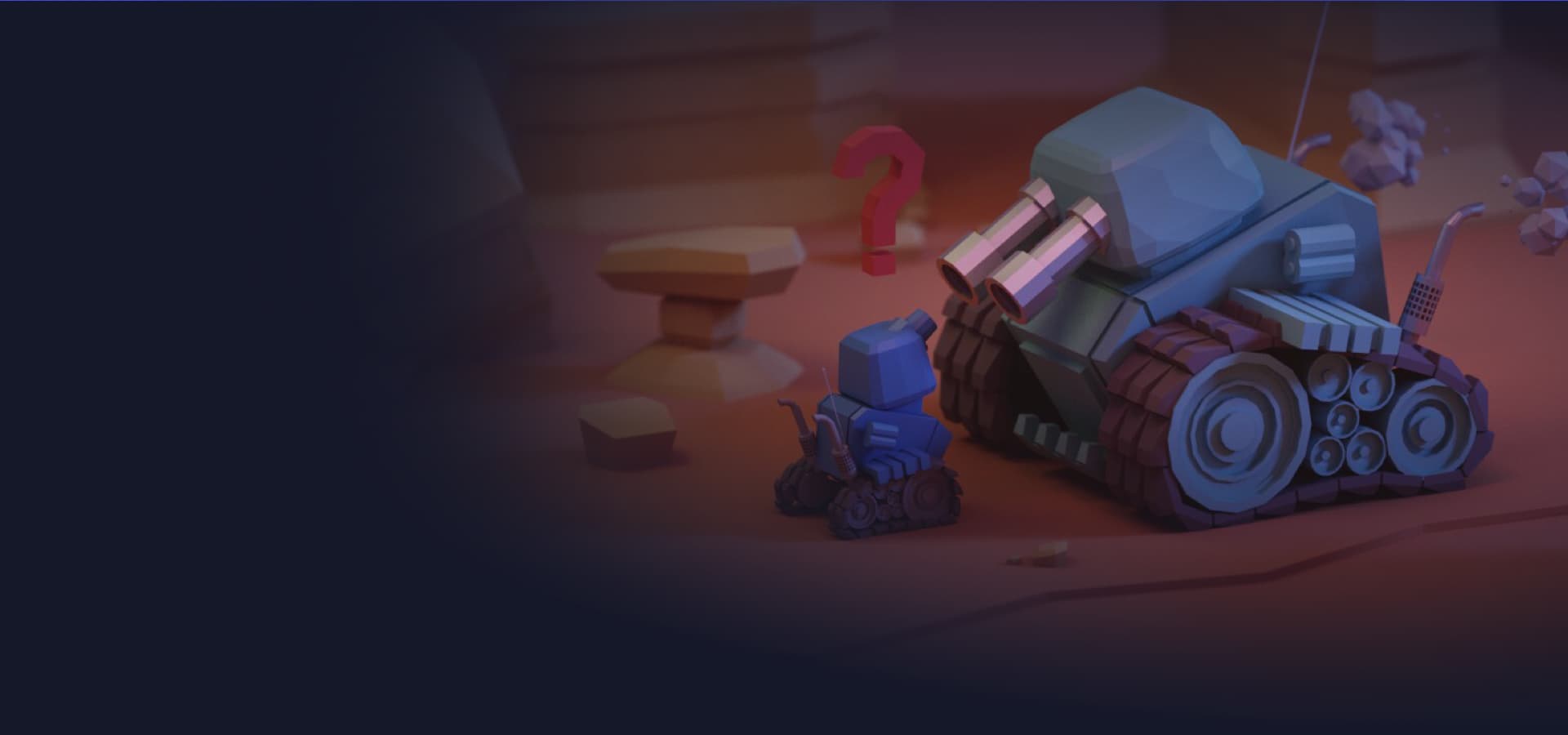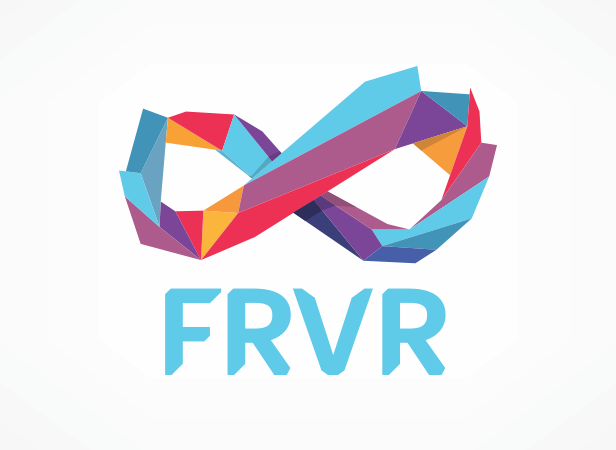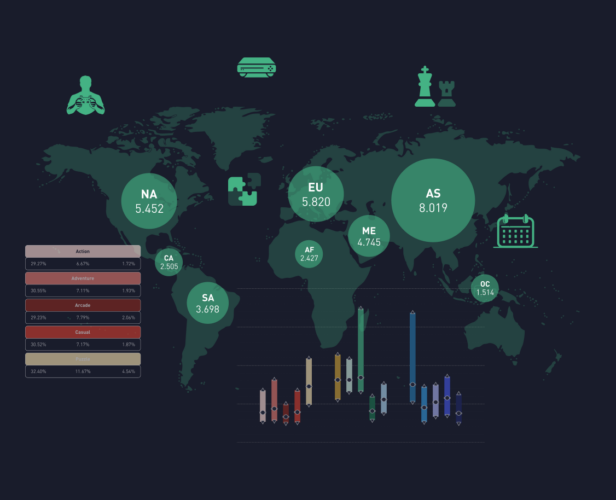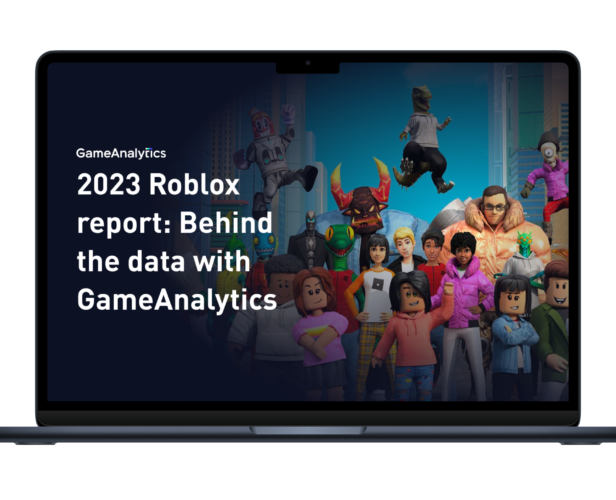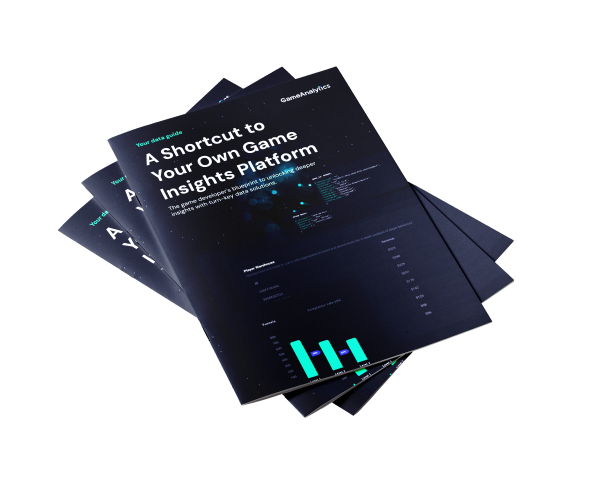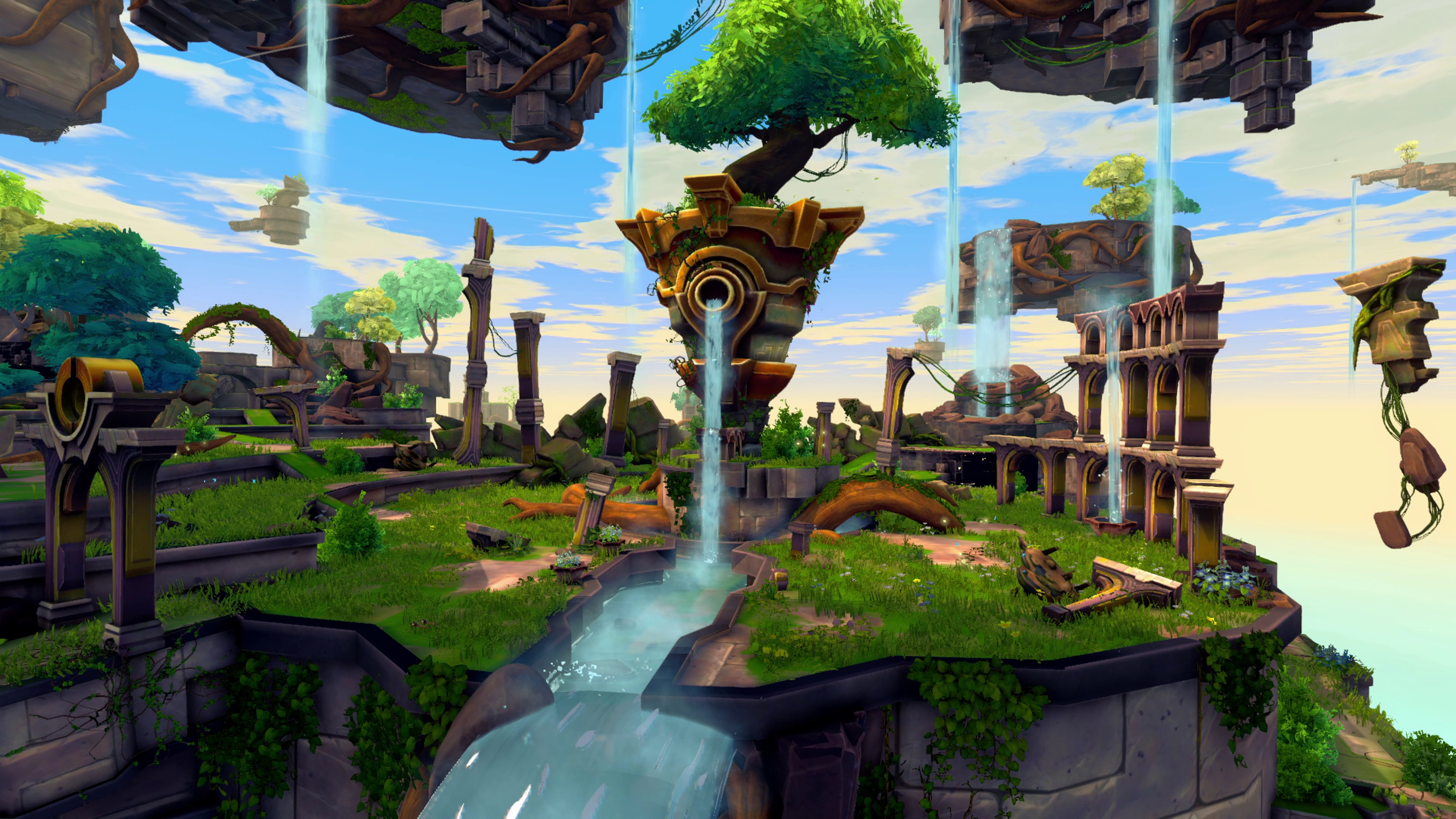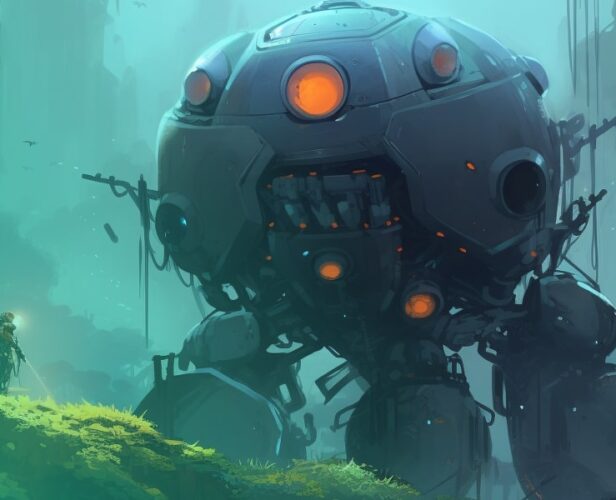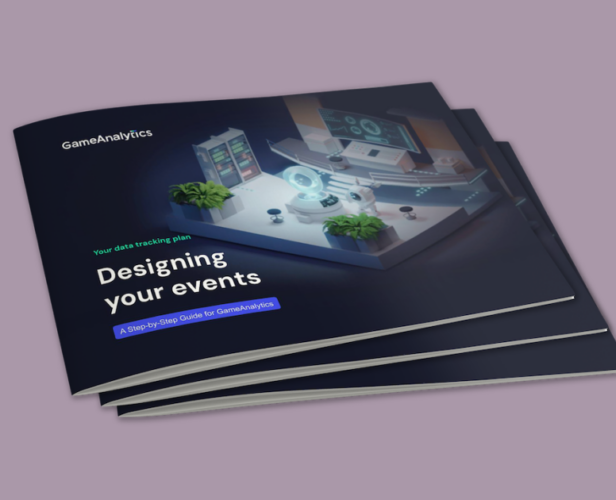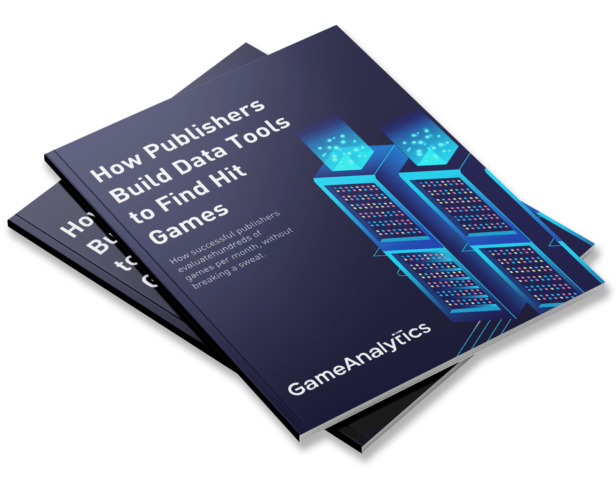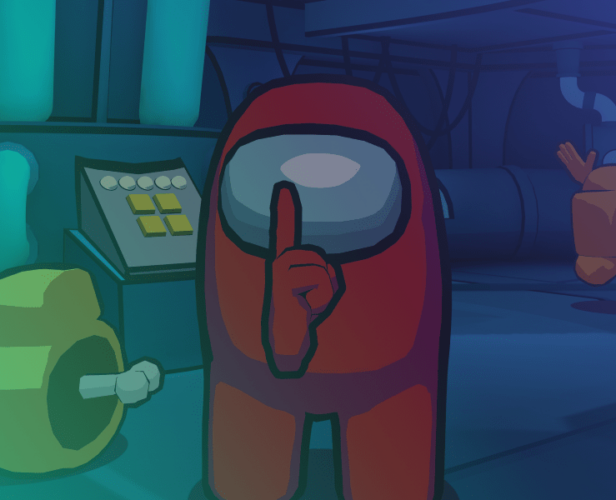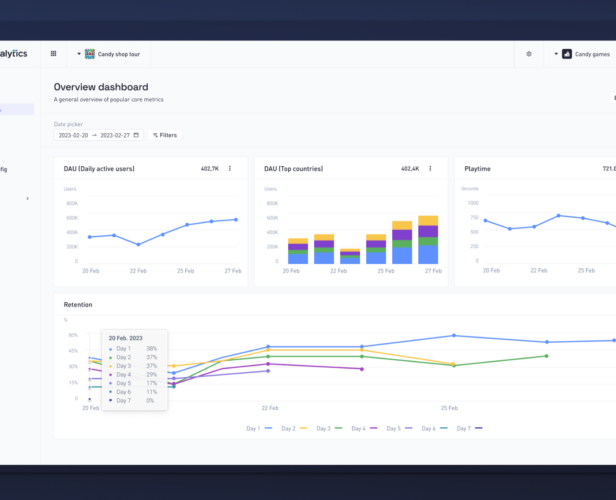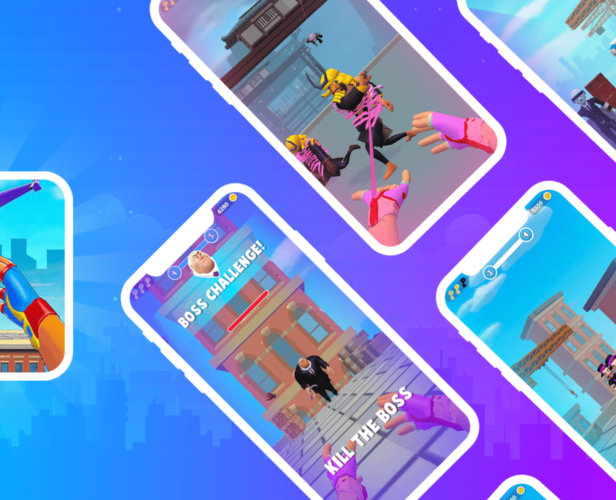Resources > All
Insights and tips about the games industry
Subscribe for gaming insights, industry reports and product updates delivered straight to your inbox.
#Game Design
The Math of Idle Games
[latexpage] This article was originally posted on Kongregate’s Developer Blog. Part I I’ve given a few talks in the past about the appeal and general mechanics of idle games, but what if you actually wanted to make one? Theory and patterns are nice, but there’s some complicated math running behind it. And how on earth do you balance a game that has insanely large numbers? This article is Part I of what will be a three-part series detailing topics covered in my most-recent talk. Part I discusses core ideas of growth, cost, prestige, and generator balancing. Part II will look into alternate growth methods (especially derivative-based). Part III will look at prestige cycles and balance. The models for all of the charts produced in these articles are available as spreadsheets. Please feel free to duplicate, peruse, experiment, extend, etc.! Let’s...
#Data & Analytics
Mastering The Art And Science Of A Mobile Game Soft Launch
The initial launch date – or soft launch date – of a new game is always one of the most exciting times for any game developer. However, like anything else worthwhile, there are some important steps that you need to take in order to make sure you get it right. It’s when you get to show the project that you’ve been working so hard on to the world! And then gain important insights with relatively low risk into its future success and any changes that need to be made for this and any future games you work on. Defining The Soft Launch Essentially, a soft launch is releasing the initial version of the game that’s ready for the public in a limited geographic area and with a fairly tight marketing budget. It’s meant to assess the potential audience, work out...
#Data & Analytics
How To Perfect Your Game’s Core Loop
At the heart of your game’s design, there are core mechanics, and the core gameplay loop. In short, it’s the main activities that structure the entire design and the players engage into repeatedly, in a looping sequence. It’s part of the essence of the game, something you cannot remove without fundamentally altering the experience. In the original Mario, this would be walking, running and jumping. The various enemies, bosses, and environments stem from the core mechanics. They are here to surprise the player, challenge his skills and keep the experience fresh. In other words: to exploit the core loop to its fullest, and add extra depth to the experience. There are several loops that structure your projects, depending on the lenses you use. Just like there’s a core gameplay loop, there are core economic loops that will derive from your...
#Marketing & Publishing
How To Grow A Gaming Community (When You Don’t Have Players)
When you get started with social networks, it’s tough. Nobody follows you. Nobody reads you. Nobody knows you! How do other game developers get those thousands of followers? 2 years ago, no one knew me either. I was terrible at communication, and I didn’t like it. Back then, I had failed a company, largely due to a lack of online presence. And today? Not only do I enjoy the exchanges with the community every day: I learned to communicate the hard way and it paid off. With a niche concept in game design education, I’ve got 30,000 YouTube subscribers, gain around 50 more every day, and companies who come to me with job offers. Thanks to them all, I’m fully independent. When it comes to getting visibility, there’s no short answer. No definitive formula to drive the people’s interest. It’s...
#Game Design
Our 9 Sound Design Tips to Improve your Game’s Audio
We barely touched on sound, yet it’s an important part of the game’s experience: It gives cues to the player that will help him to react to the world. For example, you can hint the presence of some NPC behind a wall or inside a building. Or let the player know that an enemy is rushing on him while it’s not visible yet. Sound provides instant feedback to the player’s inputs. We talked about that in the article on juicing, which you can check out right here: Squeezing more juice out of your game design! Music is your most powerful tool to drive emotion. Sound effects greatly contribute to the player’s immersion. The absence of sound, or bad sound design will break your game’s feel. That’s why you want to pay great attention to it. For this article, we collected...
#Ads & Monetization
How to Budget your Mobile Indie Game
It’s hard to estimate the amount of work required to produce a game from start to finish. We know it can be costly. It turns out there’s not a lot of information on the topic out there, thus it’s hard to schedule a project right. That’s why we asked independent studios to share some advice to help you budget your next indie mobile game. Larger companies have dedicated project managers or producers to take care of that. Hence, we’re going to focus on indie studios. How to get a mobile game budget right: the basics In short, there are only so many steps you must tackle to budget your game right: Plan your fixed costs (office rent, supplies, hardware, software licenses, legal support, accounting…) List all the tasks required to ship the finished product Break down the tasks into small,...
#Game Design
Being Successful in Free to Play Games: Atelier 801 Interview
We got in touch Melanie Christin, the co-founder of Atelier 801, an independent game studio that produced the massively multiplayer Free to Play title Transformice. Its community has been extremely active since 2011, the year of its initial release. We asked her for tips and feedback on the company’s experience. Melanie, can you tell me who you are and what you do at Atelier 801? Hi, I am Melanie Christin, the cofounder of Atelier 801. We built this game company with my partner, Jean-Baptiste Le Marchand, thanks to the success of our first game, a multiplayer title called Transformice. And we created the game one year before the studio. Your flagship game is Transformice. How does it play? Transformice is a massively online multiplayer browser-based game. The player is a small mouse that jumps from platform to platform to catch a...
#Live Ops
Live Ops Strategies For Free To Play Games
Launching a new game is an undeniably exciting moment. After putting in the hard work, imagination, and effort that goes into a new title, you get to send it out into the world. But really, the work has barely begun, especially if you’re launching a free to play or F2P game that’s monetized based on ad revenue and/or in-game purchases. Once a game is launched, you should be optimizing, adjusting, updating, and reporting your progress throughout your game’s lifespan or existence, working to improve player retention as well as increasing downloads, getting lapsed players to return, and increasing the number and length of player sessions. All these activities and events meant to increase player retention and maximize the value of a game’s user base can be referred to as live ops. [bctt tweet=”What are live game operations and why may...
#ASO
ASO For Games On Google Play: Get 53% More Installs
Outline One of the most popular questions we get is how to lure more traffic for the Google Play app. We decided to showcase a simple text optimisation for an indie game app with a small amount of installs. Disclaimer: Unfortunately, we can’t disclose the name of the game but all the data in this article is real. Introduction So, what we initially dealt with? App: Game in Google Play Category: Card Strategy Country: USA Preliminary data: Total visits per day: 329 Total installs per day: 92 Average conversion rate from visit to install: 28% The information is taken from the Google Play Developer Console, country is USA, measure by “Country (Play Store organic)”. Step 1. ASO-audit Based on current app metrics we estimated which keywords and keyphrases made users in the US find and install the app as well...
#Marketing & Publishing
How To Create User Personas As Unique As Your Audience
Do you sometimes wish that you could get to know every one of your players and the members of your target audience personally? Know their playing habits, what they like and don’t like about your game and online gaming in general, any similar interests and related activities, demographics and location, and whatever other tidbits that might have you improve your game’s user experience for them. While fulfilling that exact wish is pretty unlikely – especially with a larger audience – you can put a type of face to those data points by creating user personas that essentially characterize each group or segment of your audience. In fact, you can even name them, assign images to them for better visualization, or further flesh out their backgrounds to make them more “real” in your mind. Why You Should Develop User Personas… Personas...
#Game Deconstructions
From 0 to 2 Million DAU: An Interview with FRVR
Editor’s note: This innovative studio has released 7 games so far, with another 15 in production for Q2 2017. In less than 2 years, FRVR has gained more than 2 million daily active users and 70 million all-time players. We chat with the founder of FRVR, Chris Benjaminsen, to draw light on this success. Thanks for taking the time to talk to me, Chris. To kick things off, could you give a little background about yourself and what motivated you to start FRVR? Of course. Back in 2013 I had worked as the director of gaming for Yahoo! for two years, and it was very clear to me that I needed to do something else. I wanted to go travel the world while still generating income, and taking on as little responsibility as possible. Essentially, my initial motivation was to...
#Strategies
Getting into Free to Play Games: Lone Stone Studios Interview
There’s nothing like learning from the experience of other developers. That’s why we went ahead and interviewed a young mobile game studio who’s working on their first Free to Play title, City Invaders. We got in touch with Pierrick, the company’s co-founder. He shares his experience getting a mobile game studio started. Following on our recent 2-part article Launching a Mobile Game Business he shared some tips and several decisions the team took to hopefully make both the company and the game a success. Hi there! Could you tell us who you are and what you do at Lone Stone? Hi, I’m Pierrick Bignet, co-founder of Lone Stone studios, a game company that also provides web services. We are a small independent studio, so I’m both the game designer and one of the developers in the team. We all work on several different...
#Ads & Monetization
How To Make Your Game UI Shine & Increase Conversions
Why game UI matters Maybe you want to help the players find their way through the menus. You may also want to increase your sales. Regardless of your goal, you can achieve it all by using the principles of design the right way and measuring the impact of your changes. We want people to find their way around the game, to even focus on the game. To make this a reality, we should remove friction in the interface. We don’t want the player to waste time in the menus. We want them to get the information they need through the interface. No more, no less. Unlike the gameplay, you pretty much always want to simplify navigation as much as you can. This has nothing to do with the game’s difficulty or “casual” gaming. In mobile titles, the interface does not only allow...
#Editor's pick
Game data pipeline: Building vs buying
As a large number of studios, publishers, and game developers are heavily relying on data to guide their decisions, they need to decide between building or buying. But which one is more efficient? To assist you in understanding the Total Cost of Ownership (TCO), we broke down the following key considerations: Setup requirements Cost calculation Team needs and recruitment
#Editor's pick
Mobile gaming benchmarks for Q1 2024
Uncover the industry’s performance with Q1 2024 benchmarks. Explore key metrics like retention rates and session engagement to benchmark your games against industry standards. What’s inside? Retention benchmarks for casual, classic, and mid-core games Session length benchmarks for games launched in North America, Europe, the Middle East, and Asia Session count benchmarks across 15 game genres
#Editor's pick
Grow your revenue with Xsolla Web Shop for Mobile Games
“Xsolla anticipated this seismic shift earlier this year, when we launched multiple products that are being actively used by some of the world’s largest game companies to increase profit and build closer relationships with their mobile and pc players. We’ve now combined these products and learnings into an elegant new solution called Xsolla Web Shop for Mobile Games,” said Chris Hewish, President of Xsolla. Through Xsolla Web Shop for Mobile Games, developers can expect significant revenue growth and can reach new players in new geographies previously unavailable to them. This solution solves many challenges developers face; such as discoverability, declining profit margins, lack of control over the user experience, access to localized payment methods, cross game marketing, more efficient user acquisition, effective collaboration with creators and influencers, and much more. Three industry-changing announcements make this opportunity more timely than ever:...
#Editor's pick
2023 Roblox report: Behind the data with GameAnalytics
Download a comprehensive report of Roblox player behavior and game performance based on GameAnalytics data from 2023. This report highlights critical benchmarks and insights to help Roblox creators optimize their games. What’s inside? Devices analysis Players’ daily session frequency Average revenue spent per user Session length and count benchmarks Retention benchmarks Revenue benchmarks
#Editor's pick
The Game Developer’s Handbook to Mastering Data Solutions
Data is the key to success in the ever-evolving landscape of game development. Explore this guide to transform your data into insights using our turn-key data solutions. What’s inside? Our comprehensive guide explores cost-saving strategies and real-world applications for advanced use cases. Learn how to seamlessly integrate data sources, unlock detailed player insights with Player Warehouse, access real-time data with Raw Export, and ensure data privacy compliance.
#Case study
Developing a #1 VR MMO: Ramen VR’s Journey with GameAnalytics
Discover how Ramen VR used data-driven game development to launch "Zenith: The Last City", which became the #1 bestselling game all major VR platforms—including Meta Quest/Rift, Steam and PlayStation VR.
#Editor's pick
Using AI to Supercharge Your Game Art Design
Discover how tweaking AI tool settings can help you generate varied art styles, produce better concepts, and speed up the process from prototype to final design. With AI on your team, creating unique game art has never been easier or faster.
#Editor's pick
Event Design & Tracking Guide for GameAnalytics
Learn how to create an adaptable tracking plan, enabling you to unlock richer insights and maximize the value of your data within GameAnalytics.
#Editor's pick
How studios use DataSuite to find hit games
Learn how successful publishers evaluate hundreds of games per month, to find the next hit game.
#Editor's pick
Among Us VR dev talks about how to create immersive worlds
VR is all about immersion. It’s about allowing players to lose themselves in more than just a game, but a new world. You have to build VR experiences the right way to make this happen. This goal is always top-of-mind for Schell Games. In this interview, we spoke to Schell Games’ Vice President of Product, Charlie Amis, to learn their story. “For VR, you want to make the player feel like they’re actually in the world you’ve created. This isn’t as true or a high priority in PC and console games. If people start to lose that sense of presence and immersion, then a lot of the reason they put the headset on is hurt. They want to go to another world or be someone new. So you need to help them feel like they’re really there and really that...
#Editor's pick
GameAnalytics H1 Update: New Product Improvements!
It’s been a busy time since February, when the largest update in GameAnalytics history was launched. Read on for more information about what’s changed recently, and new functionality coming to the platform very soon.
#Case study
How TapNation uses DataSuite to increase the LTV of 19 hit games by 50% in only 6 months
Smashing obstacles with Giant Rush While they’ve seen huge improvements using DataSuite across their portfolio, one game stands out in particular: Giant Rush. (And not just because the character is huge.) The title has now reached over 140 million downloads. And, through a series of A/B tests and insights from the data they collected, they’ve been able to increase the LTV by a whopping 200% over six months for this specific title. “It’s because we A/B test every day,” Philippe Grazina from TapNation says. “We ask questions like: When are players leaving the game? For example, the boss in Giant Rush. If we spot that they’re leaving at the same point every time, we know we need to make a change. Small details like that really help.” Through these granular insights, TapNation can iterate and improve on their game step...
#Editor's pick
How to Build a Data Warehouse for Games from Scratch
Over our last couple of blogs around data warehouses, we’ve explained how they let you analyze data from across your portfolio and look at what insights you can gather from them. Now, we’ll dive into how to build a data warehouse. What steps do you need to take and what resources will you need? To figure this out, we’ve rounded up the costs, steps, and tools we think you’ll need to get started. Please note, that we haven’t included the cost of running an engineering department (which you’ll need), which can end up being a lot of $$$. What do I need to get started? Before you start, you’ll need to ensure you have the right people. You’ll likely need a software or data engineer, and perhaps an architect or DevOps engineer. You’ll also need to budget for tools like...
